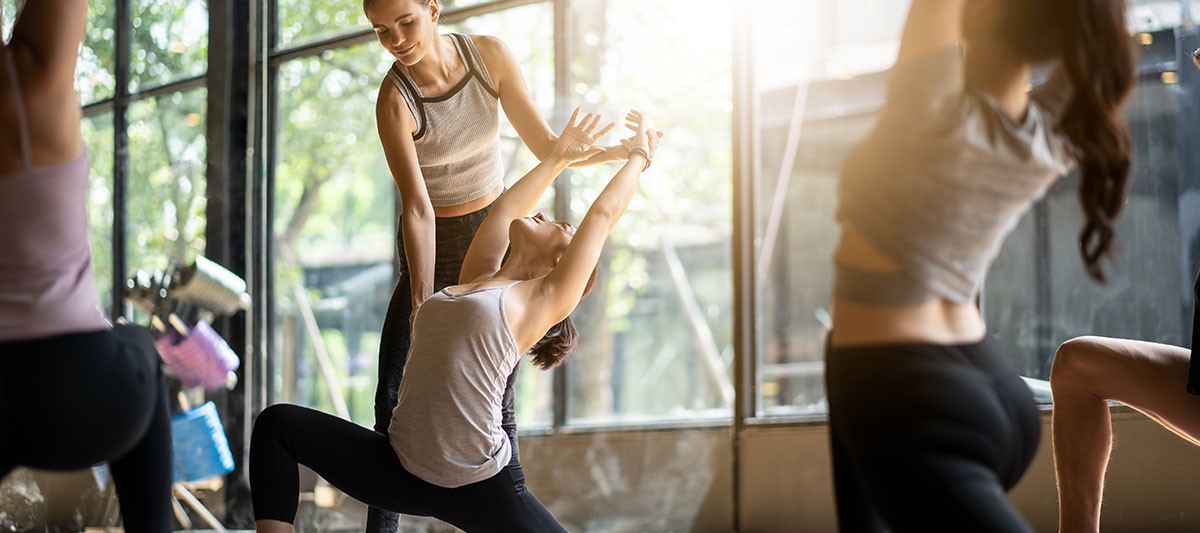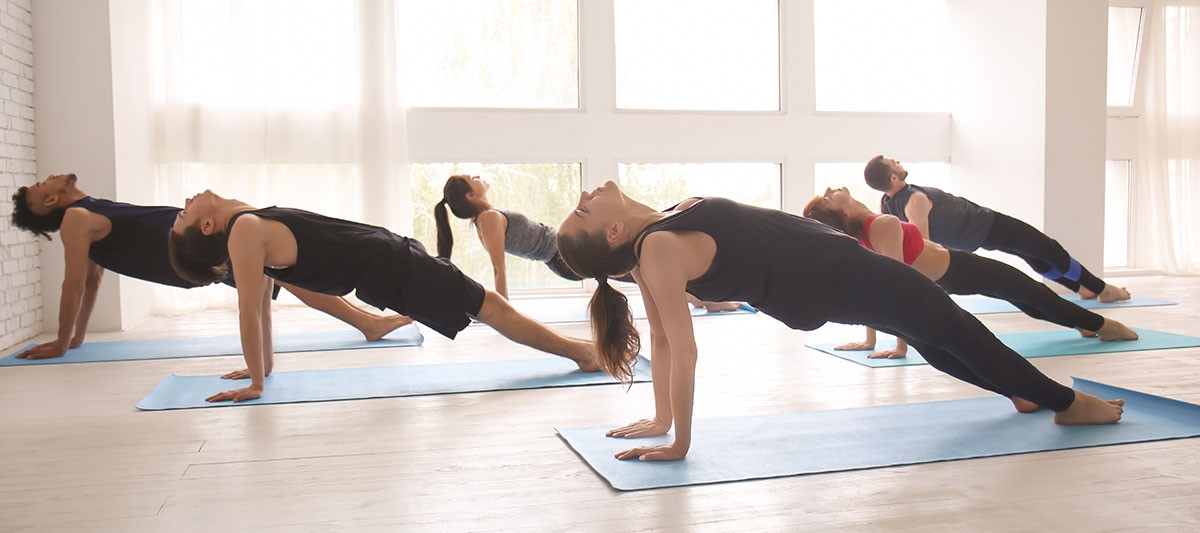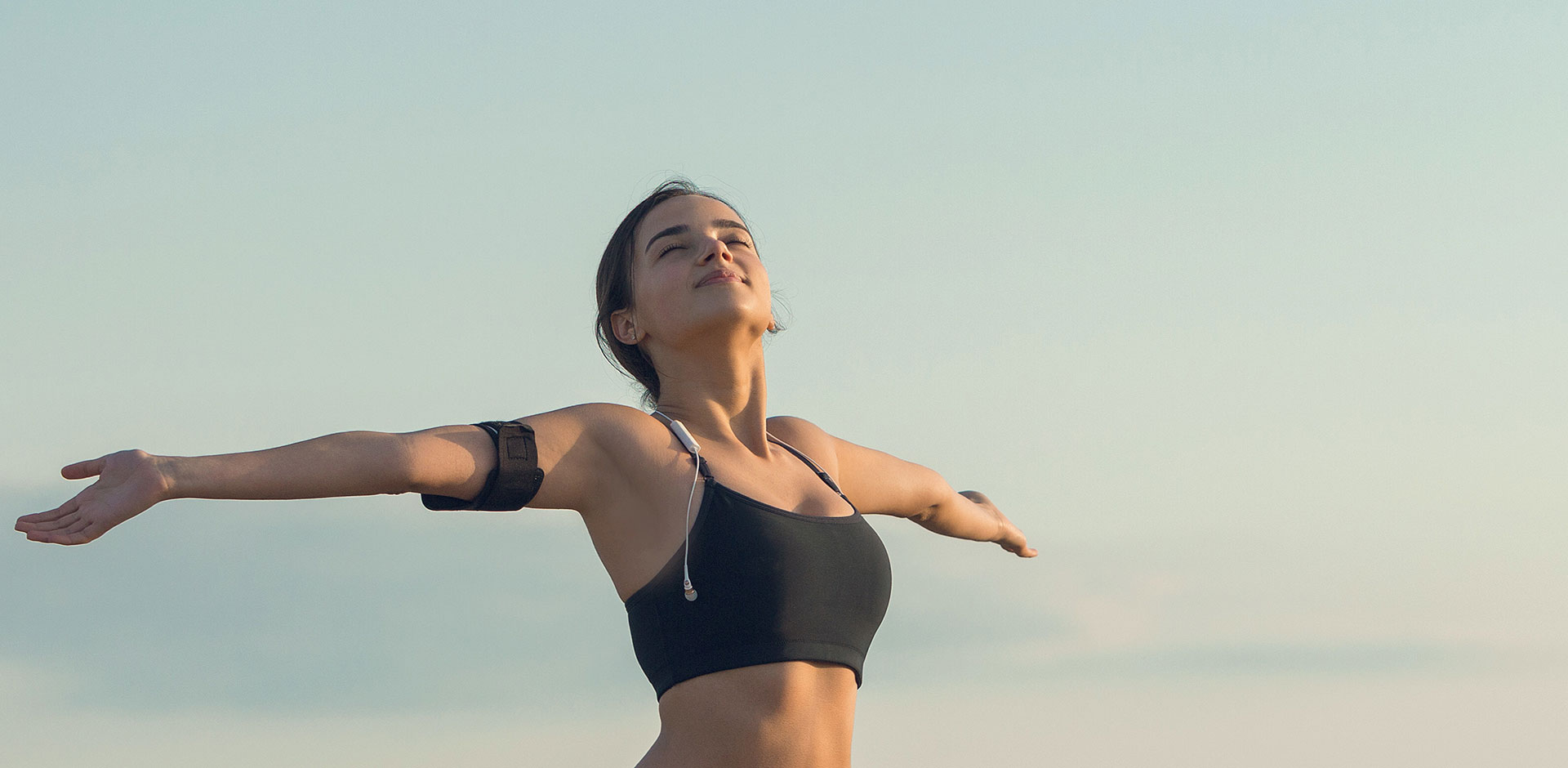If somebody of you sitting at the family table has never heard the words "Don't slouch like this!" or "Straighten up!" - cast the first stone. From an early age, parents admonished us to adopt a straight figure. But, after a short self-control and assuming the expected position, we were quickly and without reflection returning to the comfortable position for us. Primarily – thanks to the care of our parents. Because of this care for the upright posture of their kids, the so-called "Spider" enjoyed incredible popularity. I think that many of you remember very well the TV advertisement of a small belt worn on the back, which were making an unbearable sound when its user "slouched", reminding them to straighten their backs.
Although the gadget had little to do with real improvement in posture defects, its popularity testified to the growing awareness of the problem, especially among school-age youth. Over the years and the development of new technologies, the unpleasant gadget has been thrown into the corner and forgotten. And the young generations with the eyes directed towards their portable computers have entered the world of adults with more and more postural defects. I encourage you to look up for a moment while traveling by public transport and see that posture problems become more and more common.
Constant dropping wears away a stone
The problem with us - the people, is that we disregard the risk that selected activity brings, if at the time of its performance we do not see and feel its negative effects.
The more the "judgment" of incorrect conduct is deferred, the less are chances for us to change our behaviour. For a good example can be the habit of smoking cigarettes. From one smoked cigarette, our health and body will not change dramatically. We will not get cancer, we will not lose hair or teeth. Only over the years that we maintain this bad habits we will observe the growing health problems. The same process is observed in the plane of posture defects. If we bend over a book or a phone for a few times, it will not affect our muscular and skeletal systems. The problem will arise when we will adopt a bad, slouching posture for most of the day, week, months and years.
Awareness – first step to a better life

Before we get to know specific techniques and exercises that will help us to ensure the correct body posture, I would like to easily introduce the basic terms and mechanisms of which understanding will allow us to explore the topic better.
Let me make a thesis – each of us at least once in our lives held an atlas of human anatomy. A lexicon in which all muscles, ligaments and bones are presented in a very accurate and schematic way. At school, we were taught what function a single muscle has and how its work affects the joint over which it stretches. We remember that the muscles of the front of the thigh are responsible for straightening the knee joint. The straight abdominal muscle - a popular six pack, for flexing the body, and more specifically, bringing the chest closer to the pelvis (as during sit-ups). However, we were not told that these muscles are in some way connected by so-called fascial tissue and that the tension of one affects the work of the other.
In today's article I would like to emphasize the fact that regardless of what the selected muscle can do individually, it also functionally affects the integrated continuity of the whole body. Welcome to the world of Anatomic Tapes, thanks to which all elements of our movement system form an integral whole. In a world where it is not surprising that the right-handed tennis player's service has a significant impact on the quality of the gluteal muscles on the left side. World where problems witch ache in the foot can be the cause of pain in the lumbar spine. In addition, after reading this entry it will not be a big surprise that an excessively tight rectus abdominis muscle can indirectly cause the head to move forward.
Our bodies are able to make smooth and complex movements with the help of myofascial tapes. More precisely, because of the existence of a real connection between adjacent muscle groups surrounded by a connective tissue.
The structures that we will deal with today, due to their indisputable impact on body posture, are:
• Rear Superficial Tape (RST)
• Front Superficial Tape (FST)
To make it easier, I will present these tapes as two elastic bandages stretched at the front and back of the body.
Rear Superficial Tape (RST)
Its simplified equivalent is the blue bandage, which we will stretch together along the back surface of the body. The beginning of the tape is at the sole of the foot. At this point, we glue a starting part of the bandage. Then we head up, through the heel and Achilles tendon, we reach the calf muscles, which we connect with the muscles of the back of the thigh – sciatic shin muscles. Developing our bandage further, we go from the sacrum, through the erector spinae, to the head - yes, the superficial rear tape ends on the head, where we cut our bandage and glue it to the frontal bone. Of course, we have to do the same thing on the other side, starting from the sole of the other foot. Well done, we've got the whole RST process.
If we look at a man with such a bandage stuck on, then immediately after the initial daze we would ask - why is he walking with a blue tape on his back? We would understand that the rear superficial tape is responsible for keeping the body upright and prevents it from bending. Which in our case would cause the bandage to stretch. Half of the our work is over. Now we take a red bandage in our hands and head to the other side of the body.
Front Superficial Tape (FST)
As in the case of FST, we start our exercise on the foot, but this time on the dorsal side. On the phalanges of the feet we glue one end of the red tape, then we head up to the muscles of the anterior part of the lower leg, where we find well-known the tibialis anterior muscle, after which we smoothly pass to the patella. We continue our journey up through the quadriceps muscle, thanks to which we can stick the next part of the bandage to the hip bone. Then we stretch it through the over-trained rectus abdominis muscle, pass to the chest, and more precisely to fascia of the sternum, from which we move upwards, to the neck (for those who need to know more - the sternocleidomastoid muscle). It will not be a surprise if I say that the other end of the bandage is attached to the head - where our tape ends in a loop at the back of the skull. Looking at our model from a different angle, we will quickly see that FST is a functional opposition to the superficial rear tape. It is responsible for flexion of the torso, hip joints and knee joint.
Cooperation - the key to successs

Postural equilibrium in the sagittal plane is possible, among others, because of the cooperation between the discussed tapes. Simplifying the most important thing is to keep an equal tension of the blue bandage located at the back of the body and the red bandage symbolizing the front superficial tape during all activities performed every day. Otherwise, the position of the body will deviate from equilibrium. The consequence of this will be the occurrence of compensations. Not corrected early, will lead to permanent structural changes.
Lack of balance = posture problem
Postural defects in the sagittal plane are mainly due to the imbalance between the front superficial tape and the rear superficial tape.
When we observe the lifestyle of the 21st century citizen - it is not difficult.
The problem of our time is that as a society we have become extremely comfortable and we spend most of our time in flexion positions (it makes the red bandage is constantly shortening). We sit all the time - while commuting, at work, when we are returning from work, and of course, when we are at home - during meals or watching TV. In the training room, especially for men, we pay more attention to the muscle growth of the front side of the body, which often adds fuel to the fire.
Unfortunately, the body is an amazing organism that adapts perfectly to the surrounding conditions. Frequent and regular assumption of the bending position causes that the tissues of the superficial tape are shortened and tend to pull down the entire skeleton, which causes the person to constantly assume a forward leaning position.
Chronic bending position causes that the tissues of the superficial anterior tape are shortened and tend to pull down the entire skeleton, which causes the person to constantly assume a forward leaning position.
Person like this often experience:
• limitations of the plantar flexion,
• hyperextension of the knee,
• excessive pelvic tilt,
• head and shoulder moved forward,
• limited mobility of the ribs, which can lead to the serious respiratory disorders.
As you can see, staring at the phone for most of the day, several times a week for several years, can cause quite a mess in our body.
Movement - a cure for all evil

The awareness of the need for movement is constantly growing, what is very interesting. More and more people are choosing physical activity in their free time. It is also important that the awareness of the movement and exercises should raise. And that the training programs and exercises contained therein bring us closer to improving mobility rather than limiting it. Which unfortunately happens very often.
I would like to emphasize that if you want to change your body posture correctly you must first change your attitude. It is also important to realize how strongly the environment in which we function everyday affects our body posture. One hour a week at the best manual therapist will not do anything for us. If for the next 167 hours we will take positions that will lead to permanent imbalances between the myofascial straps, at a later stage they can lead to permanent structural changes.
A good example for this are people who constantly complain of excessively tense upper back muscles. They are usually people who work behind a desk, with their head and shoulders extended forward. When they want to ease their problems, they sign up for a masseur. Unfortunately, the day after surgery, the problem returns. Why? You probably already know the answer.
After the theoretical part, we know that excessive tension of the red bandage (front of the body), caused by prolonged taking flexion positions, will affect the positioning of tissues on the opposite side. The blue bandage will be excessively elongated - which will also cause stress in the tissues. Then we say that the tissues have been bolted in elongation. They become overloaded and manifest it with pain.
If the masseur focuses only on the parts of body indicated by the person as excessively tense and causing discomfort, the therapy will bring only a short-term change in the patient's condition. Muscles of the back will be relaxed, so the client will be satisfied. Unfortunately, soon after the procedure the ailments come back. They come back because a person returns to old habits, and most importantly, no action was taken to relax the muscles on the front of the body. Such work would free the front superficial tape and create the opportunity to restore balance.
It should be realized that very often the back tape is overloaded. It must counteract the pull forces of the entire skeleton down, generated by the overstretched front strap. In this situation, in the therapeutic process, the red bandage in the front of the body should be loosened first, and then proceed to strengthening the postural muscles of the back tape.
Examples of exercises
There are many different ways to stretch FST. Many of them are taken directly from yoga, so I suggest you to try this form of movement under the guidance of a teacher. Probably in most cases the exercises are done by yourself. With this in mind, I would like to emphasize that you should exercise them carefully. If a chosen position is manifested by pain or discomfort, you should stop exercising it, or exercise it a little slower and in a smaller range of motion.
Examples of yoga poses:
- warrior pose I,
- low lunge pose,
- cobra pose,
- one legged king pigeon pose II,
- upward bow pose,
- bow pose.
Generally speaking, if you want to work on the Front Surface Tape, you should perform all kinds of slopes back and exercises for stretching the front parts of the lower limbs.
Simple tips for everyday use:
1. During the way to work by public transport try not to sit. Choose a bike, scooter, rollers or go to work on foot if it is possible.
2. If you work behind a desk, take breaks from a sitting position. Get up every 30 minutes and do some upright positions.
3. When you are arranging the training plan, ensure a balance between exercises involving the front and back of the body.
4. Don't just limit yourself to one activity. Yoga, swimming (especially backstroke) or climbing can bring many benefits.
5. Go for a walk instead of spending another hour of your life in front of a computer or TV.
6. Be systematic and patient in working on your body.
7. Remember - the body is an investment.





